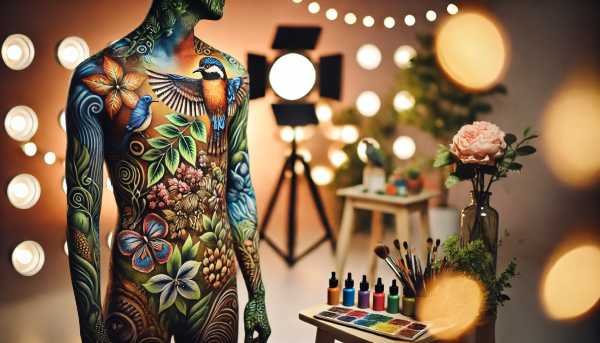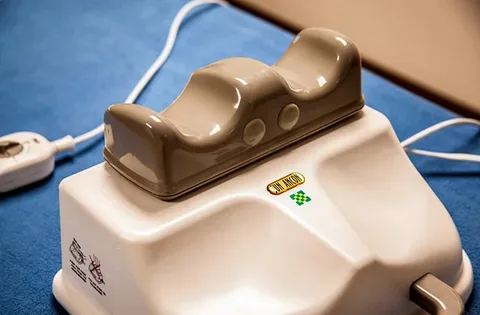Body painting is not just a form of artistic expression; it’s a powerful way to turn the human body into a living, breathing canvas. This age-old practice has evolved over centuries, shifting from ceremonial traditions to modern-day art installations, performances, and fashion statements. Whether it’s creating intricate designs for photoshoots, conveying cultural stories, or participating in global competitions, body painting continues to push the boundaries of creativity.
But what exactly is body painting, and why has it captured the attention of so many artists, photographers, and audiences? In this post, we’ll explore the growing world of body painting art, diving into its history, its current applications, and why it’s becoming an increasingly popular medium for creative expression.
The Struggle for New Artistic Mediums
In the world of art, creators are constantly searching for new ways to challenge the status quo and explore fresh mediums. Traditional methods like canvas painting, sculpture, and photography have been around for centuries, and artists often feel the pressure to break free from conventional tools and methods. This is where body painting comes in.
Historically, artists have experimented with various forms of painting, but none quite like body painting. The human body itself—an organic, moving form—offers an entirely different experience compared to static surfaces. With the body as the canvas, artists have the freedom to engage in real-time, interactive, and often temporary creations that challenge viewers to see the body in a whole new light.
However, despite its potential, body painting as an art form has faced resistance in mainstream art communities. It’s often viewed as “frivolous” or “unrefined,” while traditional paintings on canvas are seen as more serious, permanent works. Yet, this perception is changing, as body painting gains more respect in both the art and fashion industries.
The Creative Struggle for Recognition
One of the biggest challenges for body painters is the perception of their art. It’s often dismissed as temporary or niche, with critics questioning its longevity and artistic value. The transient nature of body painting can be both an advantage and a disadvantage. On the one hand, its impermanence allows artists to experiment freely, knowing that their work can be erased and reimagined. On the other hand, it makes it harder to build a lasting reputation, as these works often vanish after the paint dries.
Furthermore, body painting requires a different set of skills compared to traditional painting. It’s not just about creating a beautiful design; it’s about understanding the human anatomy, movement, and texture of the skin. The artist needs to account for the way paint interacts with the body’s curves, muscles, and joints—something that a flat canvas doesn’t demand.
Despite these challenges, body painting has found its place in the global art scene. High-profile events like the World Bodypainting Festival, held annually in Austria, have elevated the visibility of body painters worldwide. Attracting thousands of artists, photographers, and spectators, the festival has become a major platform for showcasing body art, drawing attention to the creative possibilities of this medium. In fact, the event has expanded over the years to include multiple categories like face painting, special effects, and body art in motion, highlighting the versatility of the medium.
Exploring the Creative Possibilities of Body Painting
Body painting offers unique opportunities for artistic expression, and today it’s gaining recognition in multiple creative fields. From fashion to photography, from street art to performance art, body painting is making waves in both mainstream and alternative circles.
- Fashion and Runway
One of the most significant ways body painting is being integrated into the mainstream is through fashion shows and runway presentations. Designers like have incorporated body painting into their collections, using it to create striking, innovative looks that make a bold statement. In these instances, the body becomes part of the overall fashion design, seamlessly blending paint with fabric. - Advertising and Photography
Body painting has become a popular tool in the advertising and photography industries, with major brands using painted models to create visually captivating ad campaigns. Well-known photographers like, who is famous for photographing large groups of nude bodies painted in intricate patterns, use body painting as a way to capture the human form in stunning, unconventional ways. - Cultural and Performance Art
In many indigenous cultures, body painting has been used for centuries as a form of ritualistic expression, marking everything from religious ceremonies to rites of passage. Today, artists continue to explore the cultural significance of body painting, using it to tell stories, preserve heritage, and reflect on social issues. For instance, a contemporary artist, uses body painting to transform her subjects into 3D works of art, often challenging the viewer’s perception of reality and perspective. - Body Painting Competitions
For those who want to see the cutting edge of body painting, competitions are where the best in the field come together. At events like the World Bodypainting Festival, artists from all corners of the globe compete to create the most innovative, jaw-dropping designs. The festival has not only helped to raise the profile of body painting as a legitimate art form but has also served as a launchpad for many artists’ careers. - Temporary Tattoos and Modern Body Art
In recent years, body painting has also influenced the rise of temporary tattoos. With advances in body-safe paints and materials, more people are experimenting with body art on a personal level, either for short-term fashion statements or to create unique designs that can be easily removed.
Conclusion
Body painting is no longer just a fringe art form; it’s becoming an influential medium in the world of contemporary art, fashion, and performance. Whether it’s a one-time creation for an event or a long-term project that explores the human body’s limits, this creative form of expression has found its place among some of the most respected art forms in the world today.
As more artists and creatives embrace body painting, we can expect the boundaries of what’s possible to continue expanding. The skin will always be a unique and powerful canvas—constantly evolving, always changing, and always capable of stunning new forms of artistic expression.












































